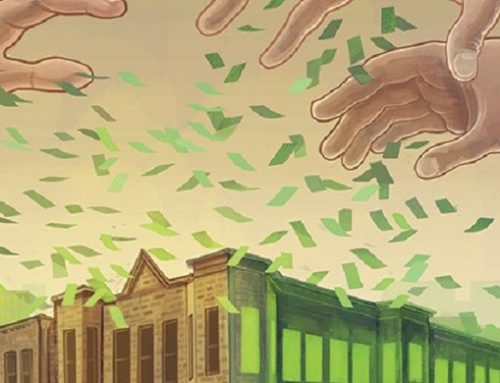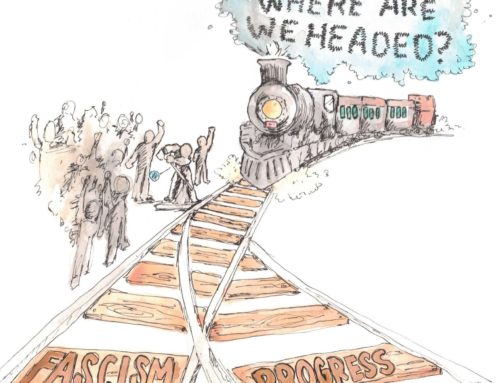Progressives (anti-imperialists and anti-capitalists) must avoid many traps designed to render us completely ineffective. We must clearly understand our situation, in order to act constructively. One fact that we must appropriate is that the crisis of capital is no longer a cyclical one. Instead it is a deeply rooted systemic crisis, from which, so far, the whole capitalist class has been unable to find a way to emerge. For the past 50 years, and intensifying during the last 20 years, a series of discrete crises are aggravating and have compounded this overall systemic crisis.
Although this is an economic crisis, the solutions must be political. Due to the low level of autonomous mass organization, and the low level of political consciousness, the various sectors of the masses—especially workers and working people—are not yet able to offer immediate political or long term alternatives to either the cyclical crises or the systemic crisis currently facing capital.
So far, the only political alternatives to the crises being offered are among and by the capitalist class, but it is apparent that they are unable to offer any viable solutions. In fact, all these crises (cyclical and systemic) are due to the inherent internal contradictions of capital at this time. Capital and capitalism are compelled to enter a process of structural adjustment (including inside the US social formation) in order to buy time, to generate a relative passivity among the masses while tumbling full speed into catastrophe. One way or another, sooner or later, capital will be forced to face its internal problem.
At this moment, capital is facing several severe internal contradictions, which are limiting the capitalist class in its attempts to offer any viable solutions:
· The dominant role of “investment capital” and its resistance to fusion with industrial capital is creating a downward spiral, from which capital is reluctantly discovering that there is no exit. The compound interest inherent to “investment capital” promotes the generation of “fictitious” values, speculative bubbles and financial crises. This particular tendency in the crisis of capital is not simply an effect of capital, but is rapidly turning out to be a structural crisis.
· One of the difficulties capital is grappling with is their inter-class struggle over how to enter a process of resolution to escape this mess. The different forms of concentration of capital are so intertwined, that even though they are all talking about bringing manufacturing (productive capital) back to the U.S., none can offer a real autonomous alternative to the hegemonic form of extraction of non-productive surplus value. They have no solutions, and are running out of options for even short-term fixes.
· One temporary and short-term fix they are advancing is structural adjustment. They are attempting to modify the basic framework of the economy to resolve its internal contradictions, through measures such as austerity, trade liberalization, privatization, and deregulation. This assaults the masses, especially the working class, and leads them to question the very forms of concentration of capital (which is expressed, for example, as populist opposition to “the banks.”)
· One of their ostensible solutions is to bring manufacture back to US soil. This is viewed as necessary because industrial production is the fundamental mechanism of producing real (as opposed to fictitious) surplus value. Surplus value is the source of all capital expansion, nationally and globally. In order to restore manufacture inside the US, capital needs to make it more profitable than offshoring. This is the purpose of structural adjustment.
· Since the production of surplus value is a social process, the capitalists must obtain the compliance of the masses for their endeavor. To persuade them, they will push the ideological content of nationalism and patriotism. During capital’s stage of imperialism, when these positions are manifested inside dominated social formations, they can be contradictory. When they are manifested inside imperialist social formations, they are reactionary—against the interests of the international working class.
The level of autonomous organized popular alternatives is extremely low, and their capacity to respond is extremely inadequate. Due to this, the capitalist class (all forms of concentration of capital) is on a wild binge of attempting to put in place alternatives that correspond to their interests, while successfully keeping the masses at bay. The ongoing contention between the Democrats, the Republicans and the Tea Party are a reflection of inter-capitalist class struggle in the political field, for the reproduction of capital. Each primarily asserts the interests of the fraction of capital they represent (with all the contradictory aspects of their intertwinement).
In all cases, without exception, the alternatives offered by any of them are reactionary, against the interests of the masses. This is the case even when some alternatives are presented as popular, “to benefit the American people.” They make this claim in order to win a social base to strengthen their program (diverting the masses into activity for various fractions of capital and contrary to the masses’ own interests), as well as to pacify the masses by lying to them.
All of the capitalist fractions are leaning heavily on the petit bourgeoisie (“middle class”), each attempting to win them over to be their fundamental allies for the objective of pacifying the popular masses as a whole.
For us, genuine progressives, it is important that we struggle to demarcate ourselves from all of these capitalist alternatives being offered in the guise of the people’s interests. We especially need to expose the true nature of left populism, so we do not jump on their bandwagon of nationalism, calling for bringing jobs back to the US.
Social alternatives are always class alternatives. They prevail or not according to the capacity of a class or classes to historically lead society, under its leadership. All alternatives for these ongoing crises are, as well, class alternatives.
In order to accomplish restoring industrial production in the US, to produce the real surplus value on which they need to base their economy, the capitalist class will need to lean on the petit bourgeoisie for support. They must mobilize a certain section of them behind this goal (even though they will also have to deal with some level of overflow, the petit bourgeoisie making demands beyond the desired boundaries of capitalist objectives, since the petit bourgeoisie also has its own class interests to struggle for). The role of American collaborationist (yellow) unions is crucial for capitalists to restrain that overflow, because of those unions’ relation to labor, and because of the sympathy of the radical detachment of the petit bourgeoisie toward unions.
The fact is that established labor organizations (AFL-CIO, SEIU, Teamsters) are no longer working class organizations. They are now capitalist organizations, representing forms of concentration of capital, and fighting for their own reproduction. The notions of “bringing back production,” and increasing the number of jobs, are very appealing to them. At the same time, they play a preventative role of repression to maintain the pacification of the working class. Even when they engage in struggle, their ultimate objective is for pacification of the working class and for an advancement of capitalist interests.
Collaborationist labor organizations are not only assisting in keeping the petit bourgeoisie in check to prevent or limit the overflow of struggle; they are also offering the petit bourgeoisie social conditions to pursue their own class interests. They are contributing to the transformation of many petit bourgeois organizations into NGOs, by funding and leading/guiding them. Many radical organizations of the petit bourgeoisie have fallen into that trap. Their members have, wittingly or not, become the foot soldiers of different forms of concentration of capital.
One of these traps, currently, is the Solidarity Center, an offshoot of the AFL-CIO. The Solidarity Center used to be known as AFIELD in the international arena. The change of name is simply cosmetic, since the role of the Solidarity Center is a continuation of the political orientation of AFIELD, which is to dominate, divert and pacify the international working class.
To offer a true alternative to the crises of capitalism, the popular and fundamental masses in the US must construct combative, autonomous, mass organizations in alliance with the international working class, to resist the onslaught of capital in all its forms.






Your rhetoric suffers for speaking solely to those who would agree with you. Even from the first word & its appendage, a value system is enforced to exclude anyone whose attention you ought to be fighting for: “Progressives (anti-imperialists and anti-capitalists)”. A debate should be the cause of posts such as this, not an echo.
Thanks for your comment. This piece is actually intended for a narrow audience, progressives who may be gravitating toward assisting the agendas of others, with long-term possible consequences that they may not anticipate. It is to provide a context, of why the current crises of capitalism is making room for particular activities that may *appear* progressive but are not.
For a general audience, your point is correct — it must have a different starting point and be more accessible.